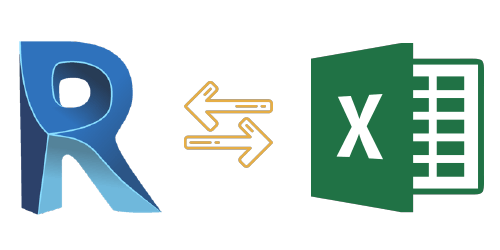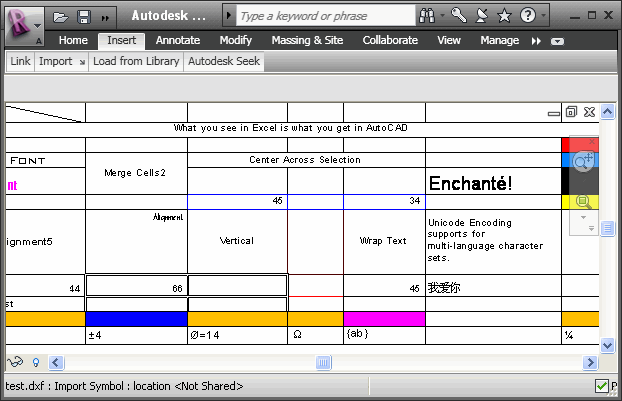Improve Your Workflow with Powerful Revit Add Ins
Wiki Article
Breaking Obstacles: Excel Importation Techniques for Advanced Revit Users
Discover different information importation techniques and master Excel integration to boost your Revit modeling capacities. With our ideas and tricks, you can get over importation difficulties and end up being a true specialist in using Excel for your Revit projects.Advanced Revit Users: Leveraging Excel for Importation
You can conveniently take advantage of Excel for importation as a sophisticated Revit customer. Excel is a powerful device that can greatly enhance your operations and efficiency in Revit. With its capability to take care of big quantities of data and carry out intricate calculations, Excel can be an useful asset in managing and arranging your task information.One method to utilize Excel for importation is by utilizing the "Web link Excel" attribute in Revit. This feature enables you to connect an Excel spreadsheet directly right into your Revit task, enabling you to update and synchronize information in between both programs. This can be especially valuable when dealing with routines or tracking modifications in your project.
One more means to make use of Excel is by utilizing the "Import/Export" feature in Revit. This function enables you to import and export information in between Revit and Excel, offering you the adaptability to collaborate with information in both programs. You can import information from Excel into Revit to create elements such as walls, spaces, or doors, and you can also export data from Revit to Excel for further analysis or coverage.

Exploring Information Importation Methods in Revit Using Excel
Exploring how to import data from Excel into Revit provides effective techniques for incorporating details. When you import information from Excel, you can flawlessly move information such as room schedules, material lists, and equipment data into your Revit project. This procedure permits you to conserve effort and time by staying clear of hand-operated information entrance.To import data from Excel right into Revit, you can make use of the "Import/Export" feature. This feature enables you to map the Excel data fields to the corresponding Revit parameters, guaranteeing that the info is properly appointed within the design. By choosing the suitable import options, you can regulate how the information is imported and exactly how it engages with your job.
One more method for importing information from Excel right into Revit is by utilizing Dynamo. Eager beaver is an aesthetic programs tool that integrates with Revit and allows you to automate tasks and operations. With Eager beaver, you can develop customized scripts that import information from Excel and control it within your Revit project. This approach supplies even extra adaptability and personalization options.
Understanding Excel Combination for Advanced Revit Modeling
Understanding Excel combination for sophisticated Revit modeling entails using effective techniques to perfectly move information and automate jobs within your task. By harnessing the power of Excel, you can enhance your Revit modeling operations and conserve beneficial time. One vital method is importing information from Excel spreadsheets directly right into your Revit design. This enables you to populate criteria, such as space names or material amounts, easily. With a few easy steps, you can map the Excel columns to the corresponding Revit criteria and import the information accurately.Another useful method is exporting data from Revit to Excel. This allows you to extract info from your design, such as timetables or material quantities, and evaluate it in Excel utilizing solutions, graphes, or various other powerful tools. By leveraging the abilities of Excel, you can do intricate calculations, produce custom-made records, and gain valuable insights into your job.
In enhancement to information transfer, Excel integration can automate repeated jobs in Revit. By developing macros or manuscripts in Excel, you can automate procedures like developing sights, creating sheets, or using basic households - revit plugins. This not only saves time but also ensures consistency throughout your project
To master Excel integration in Revit, it is essential to understand the data structure and how Revit engages with Excel. By familiarizing on your own with the readily available devices and strategies, you can open the full potential of Excel integration and take your Revit modeling to the following degree.
Overcoming Importation Difficulties: Excel Techniques for Revit Professionals
When getting rid of importation difficulties, it is necessary to be familiar with reliable Excel strategies that can benefit experts in Revit. As an advanced Revit user, you recognize the value of perfectly importing information from Excel right into your projects. However, you might come across different challenges along the means. By using efficient Excel techniques, you can get over these difficulties and enhance your efficiency.
Another valuable method is utilizing the "Transpose" function in Excel. This permits you to transform data from rows to columns or the other way around. When importing information right into Revit, this can be especially handy when you have information in an upright layout in Excel, yet you need it to be in a straight layout in Revit.
In addition, utilizing Excel solutions such as VLOOKUP and INDEX-MATCH can substantially aid in mapping data from Excel to Revit. These solutions permit you to look for certain values in Excel and obtain equivalent data from one more column. This can conserve you effort and time when importing large datasets into Revit.
Excel Information Importation Advice for Advanced Revit Users
By acquainting on your own with efficient Excel suggestions and tricks, you can boost your data importation process as an advanced individual of Revit. Excel is a powerful tool that can greatly promote the importation of data right into Revit, saving you time and boosting your productivity. One beneficial tip is to make use of the "Text to Columns" feature in Excel to divide data right into different columns based upon a delimiter. This can be especially practical when you have data in a single column that requires to be divided into numerous columns in Revit. In addition, using Excel's "Paste Unique" attribute allows you to paste data from Excel right into Revit while keeping formatting, such as cell color or font style. This can be specifically useful when importing information that calls for particular formatting in Revit. An additional useful method is to make use of Excel's "Replace and discover" function to swiftly make adjustments to your information prior to importing it into Revit. For instance, you revit tool can quickly change particular message or personalities with others, conserving you the moment and initiative of by hand editing and enhancing the data in Revit. By utilizing these Excel suggestions and techniques, you can enhance your data importation process and end up being much more skilled in using Revit.
Final Thought
You have now found out beneficial methods for importing data from Excel right into Revit as a sophisticated user. By leveraging the power of Excel assimilation, you can improve your modeling procedure and get rid of any importation tests that might arise. With these techniques and tips, you will certainly be able to understand data importation and boost your Revit skills. Go ahead, damage those barriers and succeed in your Revit projects!
When importing information into Revit, this can be especially helpful when you have data in an upright format in Excel, however you require it to be in a horizontal style in Revit.
In addition, utilizing Excel formulas such as VLOOKUP and INDEX-MATCH can substantially assist in mapping information from Excel to Revit. In addition, utilizing Excel's "Paste Unique" feature enables you to paste information from Excel right into Revit while maintaining formatting, such as cell shade or font design.
Report this wiki page